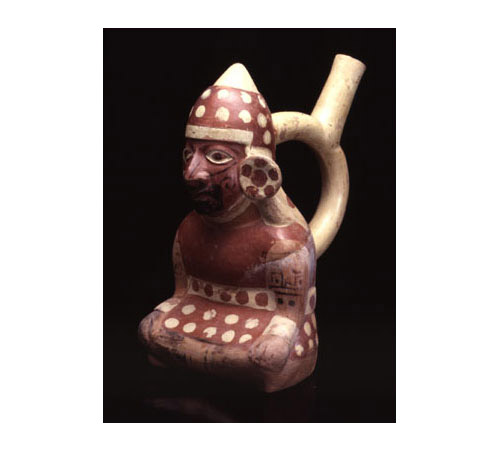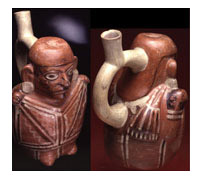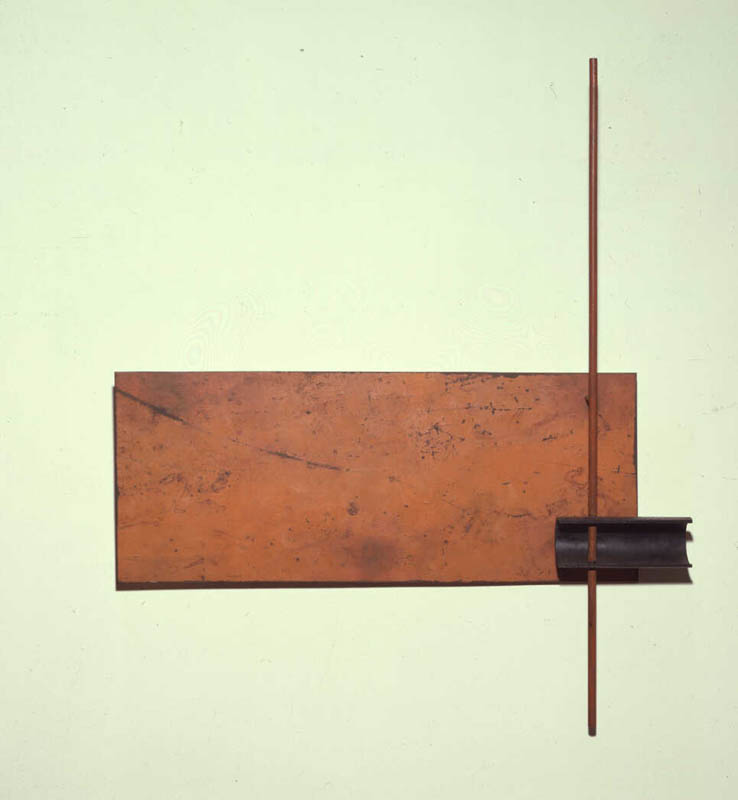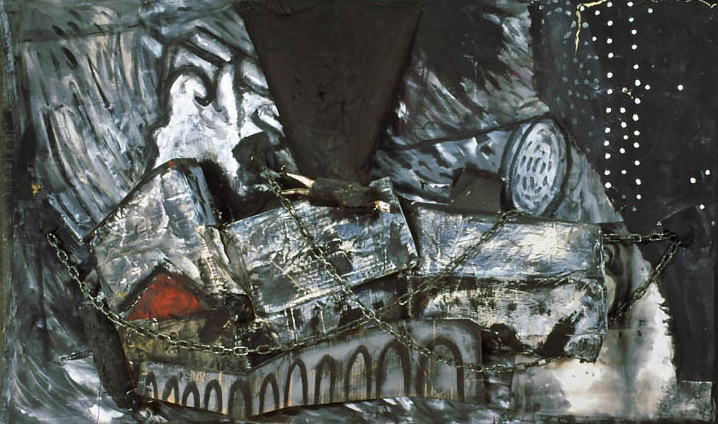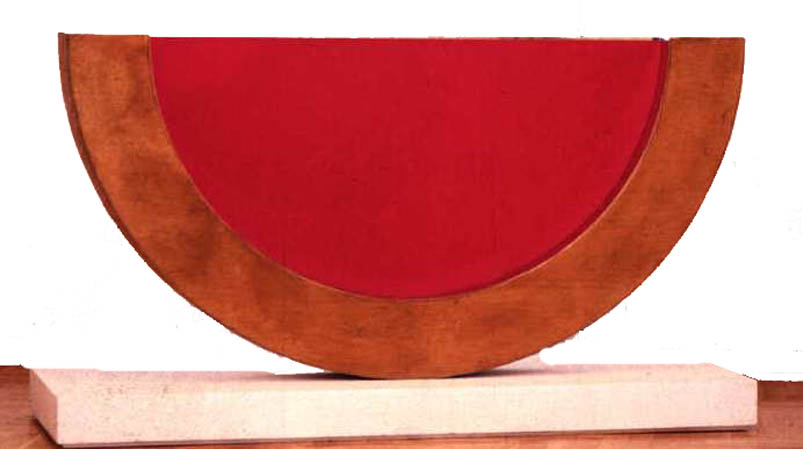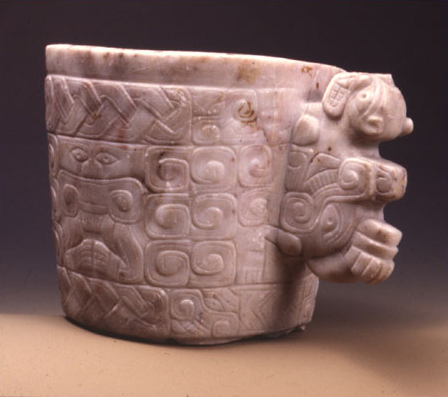
Click here to view image
Cylindrical mug
Collezione Missioni Cattoliche Americane 1893 donazione
cultura Maya
Cylindrical mug
X - 901 - 1000
Unità di misura: cm; Altezza: 15; Diametro: 17; Varie: Protome: cm 11 x 4.5 x 6.5 (h x L x P)
Repubblica dell'Honduras
marmo di Tecali- scultura
Mostra d'arte precolombiana e di etnologia americana - Museo delle Culture del Mondo Castello d'Albertis - 1972/1977
The artifact may have been a chief's cup for drinking cocoa. . From the American Catholic Missions Exhibition Catalogue, 1892, n°147, p. 130: '...it was found in a ravine of the Humuya River in the Dept. of Comayagua'. Pinkish-white cylindrical container. The outer wall of the mug is finely engraved with two bands, one lower and one upper, decorated with braided glyphs (textile prototype, mat weave). These bands delimit a central band decorated with Greek glyphs and an anthropomorphic figure with face, mouth ornament and upper limbs. Feline-shaped handle with engraved paws and body and head in the round. The body is decorated with engraving and the head has engraved eyes and gnashing jaws.


